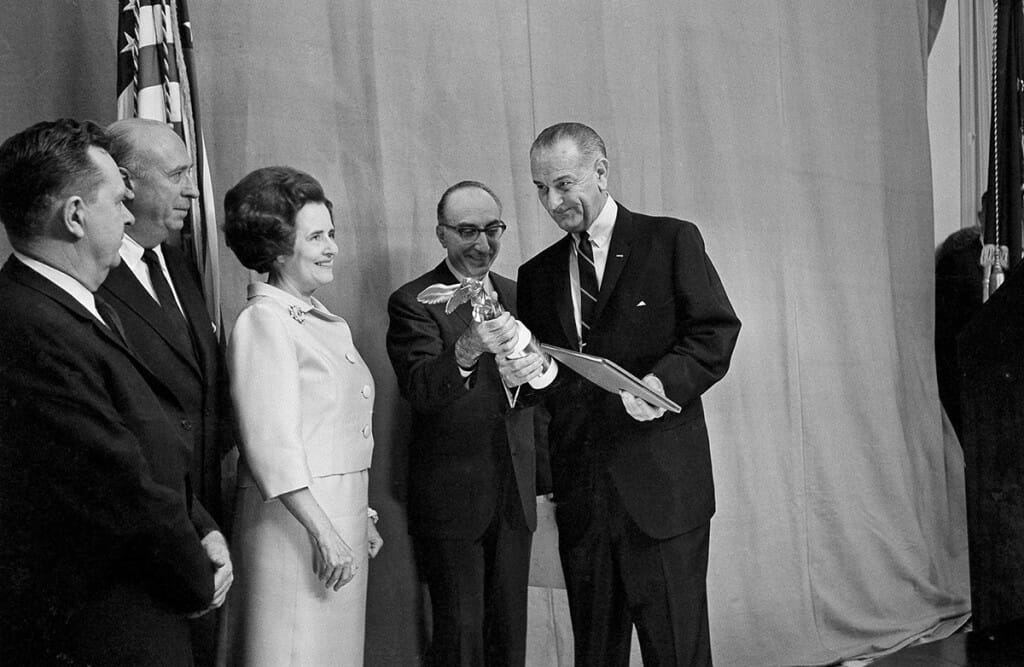A Matchmaker between Science and Society
Philanthropist Mary Lasker x1922 was one of the most influential figures in 20th-century medical research.

Lasker with President Lyndon Johnson, who received a Lasker Award in 1966 for his efforts to promote health legislation. William J. Smith
A combination of experiences — painful ear infections during childhood, a family laundress undergoing a double mastectomy, her husband’s death from cancer, and more — impelled Mary Lasker’s notable life accomplishments.
Lasker x1922 became one of the most influential figures in 20th-century medical research, despite admittedly having not a speck of training as a scientist.
Together with her husband, advertising executive Albert Lasker, she created the Lasker Foundation in 1942 to shine a light on emerging medical research. They established the Lasker Awards, which for more than 70 years have honored dozens of recipients, many of whom have gone on to win Nobel Prizes — including the UW researcher Howard Temin. Seeing a need to educate the public about cancer and bolster research funding, they reshaped a previously ineffective organization into the American Cancer Society.
After Albert’s death, Mary began an unrelenting campaign to counteract woefully low regard for the importance of medical research. She lobbied presidents and members of Congress, urging them to channel public money to the study of major diseases. She called upon medical experts, the media, and Hollywood as she built a network of support, leading Jonas Salk, who developed the first polio vaccine, to describe her as “a matchmaker between science and society.”
Ever the pragmatist, Lasker once said, “Without money, nothing gets done.” Thanks in large part to her efforts, the National Institutes of Health’s budget soared and the federal government committed funds to a “war” on cancer. (No doubt getting columnist Ann Landers to motivate 500,000 readers to send letters to legislators helped to pass the National Cancer Act.)
For those who questioned putting resources toward such efforts, Lasker made a succinct observation: “If you think research is expensive, try disease.”
Although she received the Presidential Medal of Freedom, one honor may have touched her heart more. An ardent proponent of urban beautification programs — she donated more than 10,000 azaleas for Capitol Hill and 300 cherry trees to the United Nations — Lasker became the namesake for a pink tulip in the 1980s.
Published in the Winter 2019 issue



Comments
Hal Shurtleff May 19, 2024
Mary and her late husband were racists. They funded the “Negro Project.” Interesting that LBJ received the Lasker Award in 1966. He, along with M. L. King, received the Margaret Sanger Award that same year.